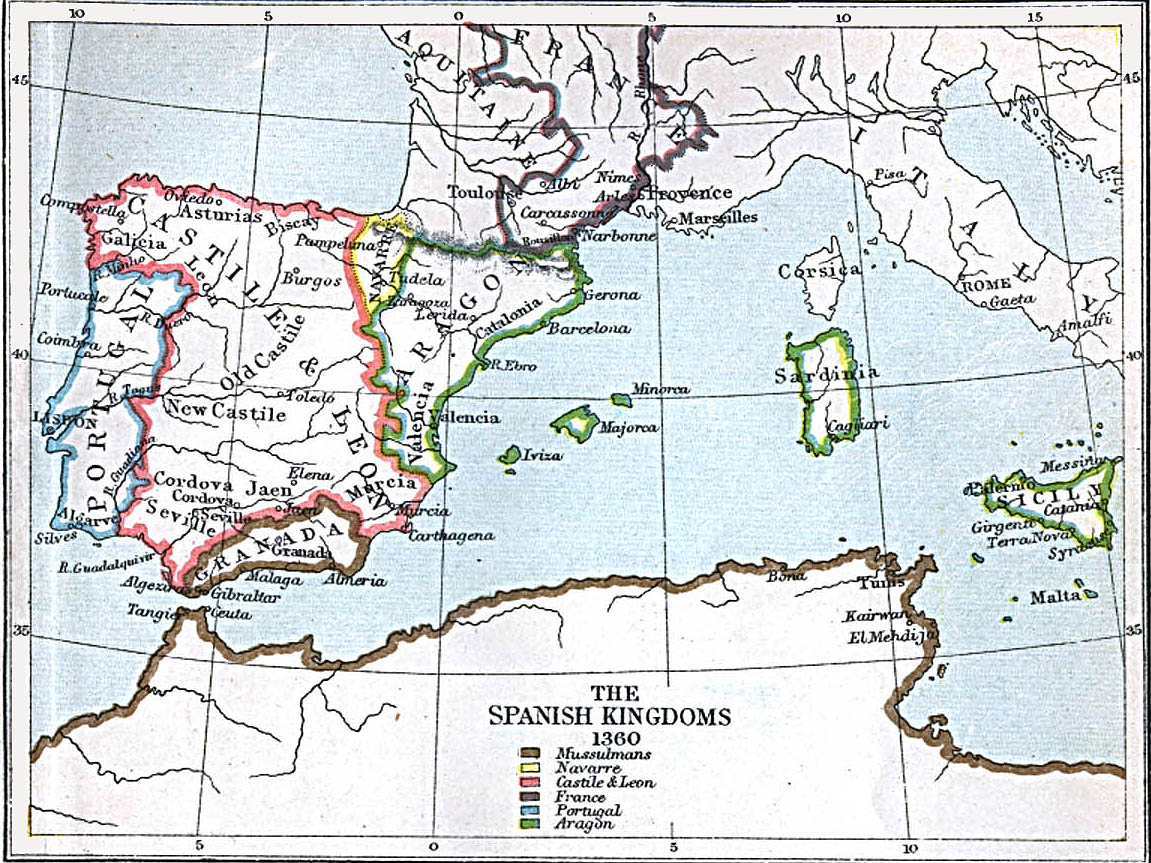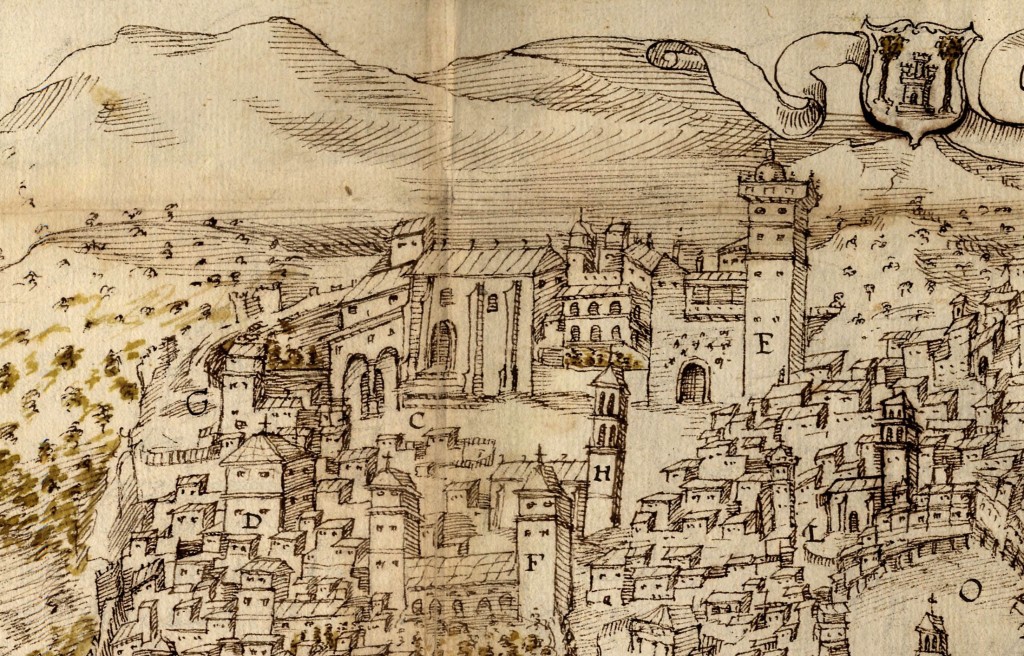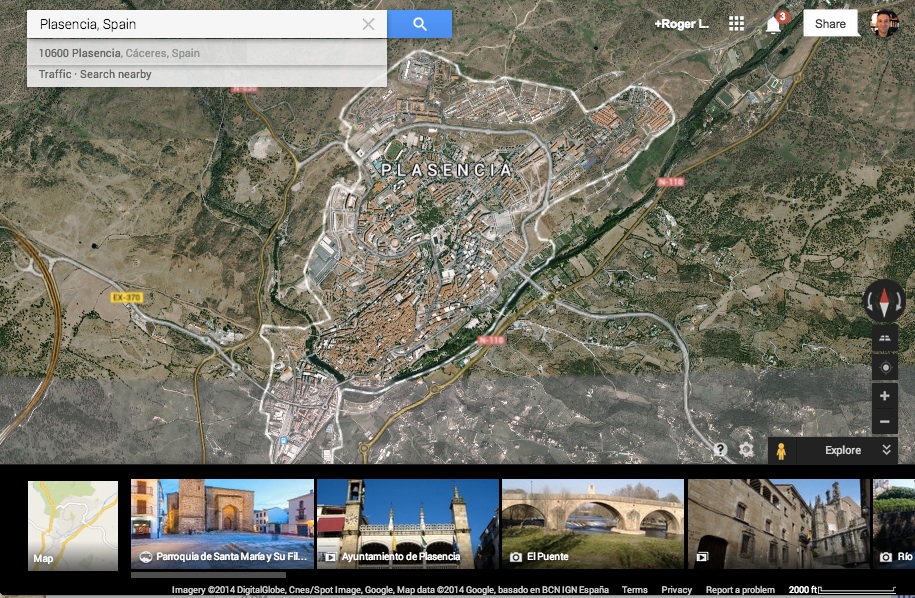Historical Background on Medieval Spain and Plasencia
[/lab_heading]
Plasencia is located in the rocky and oak-covered Spanish province of the Extremadura and a territory formerly known as the Roman region of Lusitania. Prior to the fifteenth century, the Iberian Peninsula had known successive rulers – Carthaginian, Roman, Visigothic, Islamic, and native Iberian Christian – from the third century B.C.E through the end of the fifteenth century C.E. The most momentous in shaping present-day Spain and Portugal was the Islamic conquest of Visigothic kingdom in 711. Over the course of eight centuries Spanish history would continuously labor under Christian-Islamic political conflict for supremacy in what has become known as the Spanish Reconquista, or the Christian endeavor to reconquer the Iberian Peninsula from Muslim rule. The origins of fifteenth century Castilian Christian Plasencia are framed in the politically and religiously charged language of the Spanish Reconquista because Placentinos conceived of themselves as Christian inheritors of this Roman-Visiogthic tradition, although the Muslims dominated the area from 713 to 1189 (Archivo de la Catedral de Plasencia [ACP], Legajo Doc. 11, Folio 3-3v).
[/lab_scroll_box]

Map of Medieval Spain. Source: http://www.lib.utexas.edu/maps/historical/spanish_kingdoms_1360.jpg
From 1189 to 1196, the historical record of the city of Plasencia began to take distinct shape. Castilians remember this era as one marked by the triumphant capture and renaming of the city. For the Islamic Almohads, it was a short-term loss. The earliest historical source from Plasencia that speaks to this 12th century event is the 1579 manuscript entitled Annales de la Santa Iglesia Catedral de Plasencia desde su fundación. Dr. Juan Correas Roldán’s Annales record the re-capture and re-conversion of Plasencia from an Islamic-ruled city to one governed by Christians. An important component of the event was the renaming of the city and the regeneration of the local church leadership. Roldán declares in his annals:
In 1189, the 31st year of [King Alfonso VIII’s] rein,…and in the Province Lusitania, which the Ancients called Vetonia and we now call the Extremadura, you [King Alfonso VIII] won from the Moors…the ancient city called Ambroz. There, you established the city of Plasencia by your royal privilege (Archivo de la Catedral de Plasencia [ACP] Legajo 129, Doc. 11, Folio 2).
Approximately fifty years after the appearance of Roldán’s history of Plasencia, in 1627, Friar Alonso Fernández embellished upon Roldán’s account by drawing upon an older and critical Castilian chronicle dedicated to the aggrandizement of King Alfonso VIII. Friar Fernández’s wrote:
[King Alfonso VIII] directed his effort to building a new and divine city…and he called her Plasencia. He converted those persons living in her villages [to the Christian faith] and exalted the Pontifical Tiara.
It appears that King Alfonso VIII was not simply transforming the thriving Islamic city of ‘Ambroz’ into ‘Plasencia’, but establishing a small hamlet to be a new Christian bulwark against the Islamic south. Hence, a cultural norm placed Muslims and Christians in constant competition with one another. What most local historians of Plasencia exclude from their ecclesiastical histories is the recapture of the city by Caliph Abu Yusuf Ya‘qub al-Mansjur in 1195-96.
As if attempting to find excuses for the Christian loss of Plasencia, Friar Fernández argued that the city’s residents could not properly fortify the city (Historia y Annales de la Ciudad y Obispado de Plasencia, p. 55-56). However, Islamic sources explain that the Muslim recapture of Plasencia was a devastating Christian event. In April 1196, Plasencia’s immediate neighbor to the south, the village of Trujillo, fell, and shortly thereafter, “Plasencia, newly settled by Alfonso VIII…was taken by assault; the bishop and many of the clergy were killed and others taken as prisoners to work on new buildings at Rabat.” Not only was the Castilians’ triumphant establishment of Christian Plasencia derailed for as many as twenty-six years (through 1221), but even the details of its destruction and the fate of the clergy were either not clearly understood or misrepresented. It took an additional nine years before royal and papal authority was restored to Plasencia. On November 10, 1221, a new Castilian king, Fernándo III, “conceded and confirmed” the royal privilege that King Alfonso VIII had previously granted to the City of Plasencia (ACP Legajo 129, Doc. 11, Folio 2-3). In that same year, official papal recognition came when Castilian King Fernándo III received a Pope Honarius III’s bull confirming the creation of the Diocese of Plasencia (ACP Legajo 129, Doc.11, Folio 3-3v). Even with the restoration of Castilian monarchy of the city, its geography and people were byproducts of a hybridized past.
Geographically, early-fifteenth-century-Plasencia (the community reconstructed in Virtual Plasencia, Version 1.0) was a hub of social and commercial life in the northern portion of Extremadura (a geographic zone in western Spain). Extremaduran Jews, Christians, and Muslims and their families were integral components of the agricultural, commercial, and even property-owning
class during the fifteenth century. To the north of Plasencia was the university city of Salamanca, to the east was the former Visigothic capitol of Toledo on the Tajo River, to the south was the ancient Roman city of Mérida, and to west, lay the independent kingdoms of Portugal. The Jerte River encloses the city’s southern flank flowing from the west to the east. All along the banks of the river, in the city and northward to the village of Béjar, were sizable agricultural plots. According to the 16th century observer Luis de Toro, a physician, the river supported a wide variety of vegetables and fruits. He noted:
It supports innumerable farming plots, vineyards, olive groves, and chestnut trees, but principally, there are apple groves….They have the apples of the sweetest taste and size….There are also every variety of lemon trees…and all types of cherry, pear, and peach trees (Biblioteca de la Universidad de Salamanca [BUS], Mss. 2.650. Descripcion de la Ciudad y Obispado de Plasencia por Luis de Toro. Folios 25-26).
[/lab_scroll_box]

Luis del Toro’s 16th Century etching of Plasencia (the jewish quarter which included the Plaza de San Nicolás).
Thus, the immediate region around the city was an agriculturally productive zone that the community could utilize to enhance their lives. According to archival tax records from the Diocese of Plasencia, in the year 1400 there were only 119 adult men and their families—40 Christians (34%), 50 Jews (42%), and 29 Muslims (24%)— that resided in the city (Paredes y Guillén, 1903, p. 66-67; Santos Canalejo, 1981, p. 105-107). Historians speculate the total population of the city was roughly 800 to 1,000 souls, although Luis de Toro reports that the city’s population did not reach “1,000 persons” until the 1570s. (Toro, Luis de, Folio 14v.) Thus, Jews and Muslims were a key component of the population base throughout the fifteenth century and one was incredibly important to the local economy.
[/lab_scroll_box]
